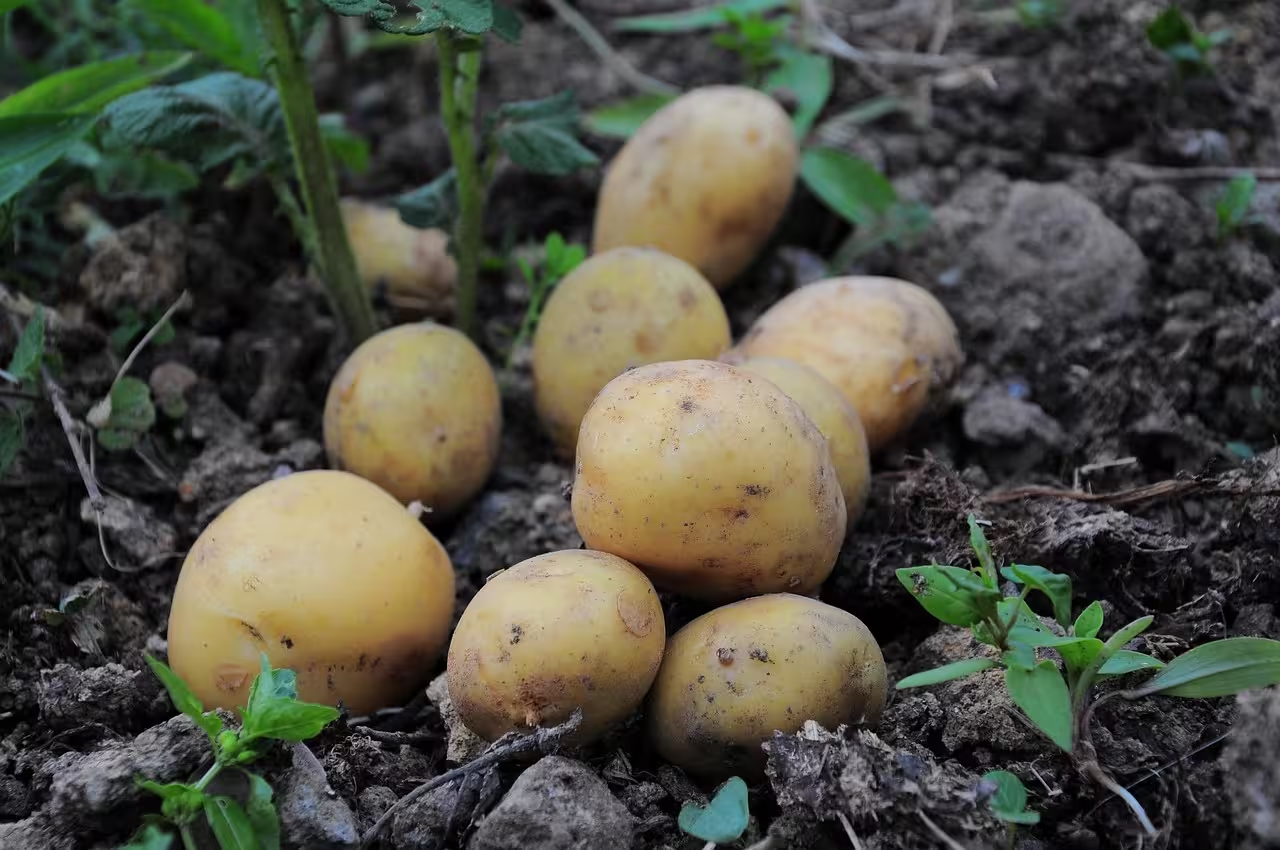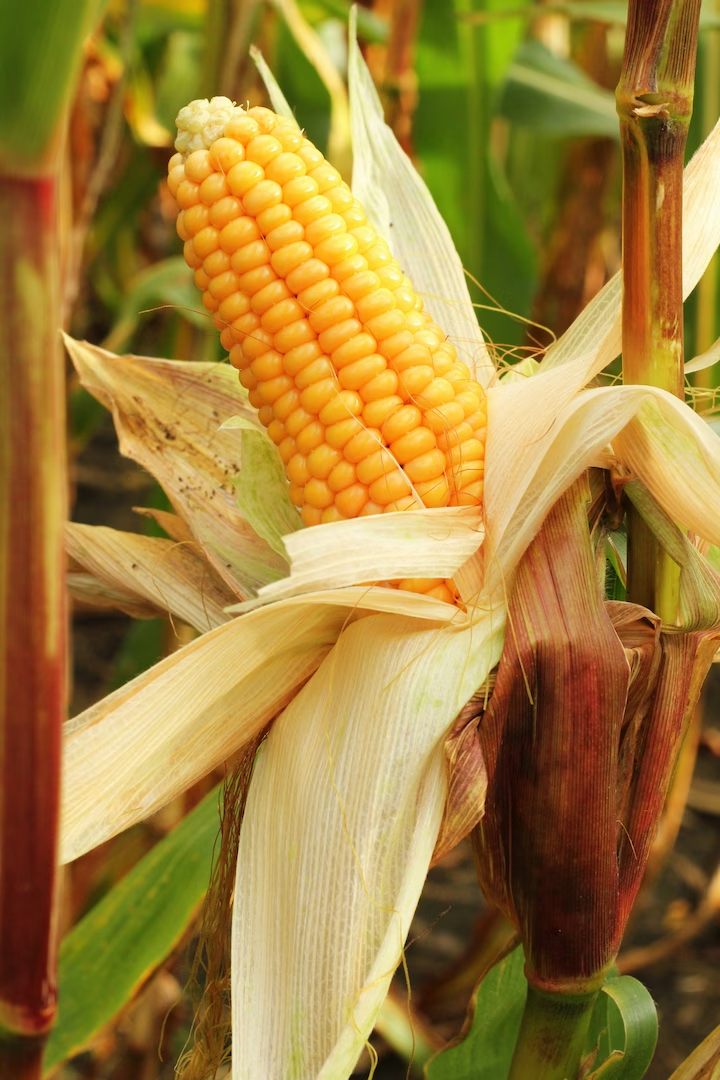Potato
Solanum tuberosum
Potatoes are a versatile, starchy tuber widely grown as a staple crop. Known for their adaptability, they can be boiled, mashed, fried, or roasted, making them a cornerstone of many cuisines globally.

Quick Information
Planting Calendar
Growing Guide for
1 Prepare Potato Bed
Dig soil deeply (trench or bed), removing weeds/stones. Incorporate well-rotted compost or manure for fertility and drainage.
2 Chit Seed Potatoes
Place seed potatoes (eyes up) in a cool, bright, frost-free place (e.g., egg box on windowsill) 4-6 weeks before planting to encourage short, sturdy sprouts.
3 Sow Seed Potatoes
Plant chitted seed potatoes 10-15cm deep, sprouts upwards, 30-40cm apart (earlies closer, maincrop wider). Cover lightly with soil.
4 First Earthing Up
When shoots reach ~20cm tall, draw soil up around the stems, covering about half the growth. Protects tubers from light and encourages more growth.
5 Fertilize Potatoes
Apply a balanced potato fertilizer or high-potash feed around plants as per instructions, often around the first earthing up. Avoid excess nitrogen. Water in.
6 Second Earthing Up
Repeat earthing up 2-3 weeks after the first, drawing more soil around the stems as they grow to keep developing tubers covered.
7 Monitor Pests & Diseases
Regularly check leaves/stems for potato blight (especially in humid weather - check blight warnings), Colorado beetles, aphids, slugs. Act promptly.
8 Water Consistently
Water regularly, especially during dry spells and tuber formation (around flowering). Keep soil consistently moist but not waterlogged.
9 Harvest Early Potatoes
Check "First Earlies" ~10-12 weeks after planting (often around flowering). Gently lift one plant to check size. Harvest as needed for immediate use.
10 Harvest Maincrop Potatoes
Harvest "Second Earlies" (13-15 weeks) & "Maincrop" (15-20+ weeks) after foliage yellows/dies back. Consider cutting foliage 2 weeks prior to harvest to harden skins. Lift carefully with a fork on a dry day.
Companion Planting Guide
Why Companion Planting Matters
Companion planting can help deter pests, improve pollination, enhance growth, and maximize garden space. Some plants release chemicals that repel pests or attract beneficial insects, while others can improve soil quality or provide shade for sensitive plants.
Explore More Plants

Chilli Pepper Fruit
Chilli peppers are the fiery fruits of the Capsicum family, known for their intense heat and use in various cuisines. They range in size, shape, and spiciness, adding a kick to dishes worldwide. They thrive in warm climates and require careful cultivation.

Sweet Pepper Fruit
Sweet peppers, also known as bell peppers, are a variety of Capsicum annuum prized for their large, mild-flavored fruits. They are used in a wide range of culinary applications, from salads and stir-fries to stuffed peppers and sauces. They require warm conditions and plenty of sunshine to thrive.

Sweetcorn Vegetable
Sweetcorn is a tall, annual grass cultivated for its edible kernels. It thrives in sunny locations with fertile soil and is best eaten fresh. The cobs can be grilled, boiled, or roasted, and the kernels used in various culinary dishes.
